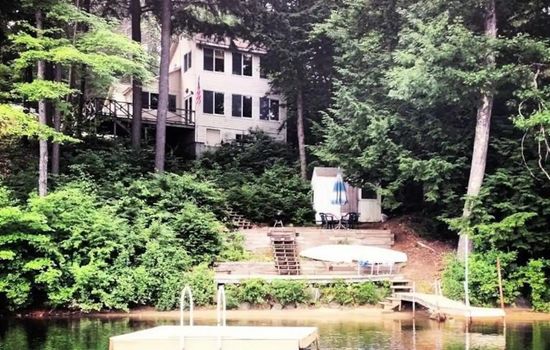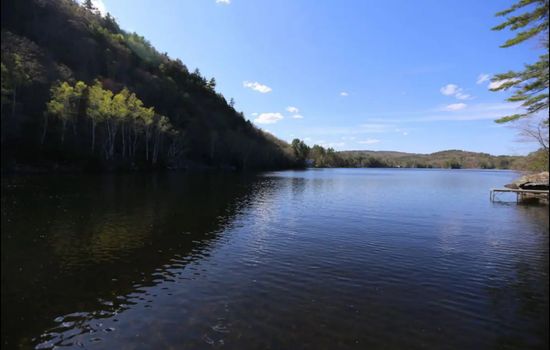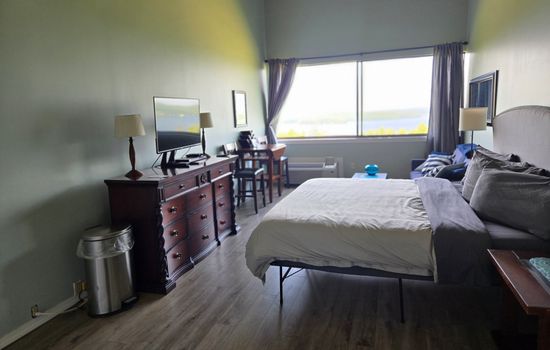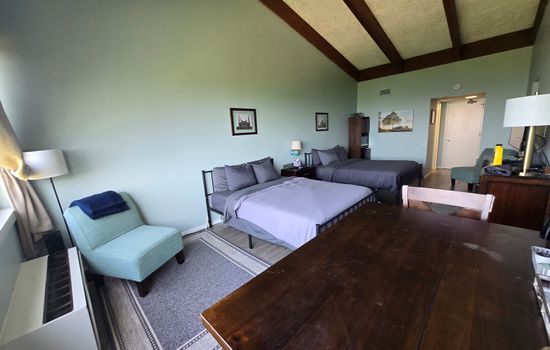The visitor center at Saint-Gaudens National Historical Park is open Thursday through Monday from 9am to 4:30pm, from Memorial Day weekend to October 31. During the winter, it is closed, but may have periodic hours; call for details.
The entrance fee at Saint-Gaudens National Historical Park is $10 for adults 16 and older, free for children 15 and younger. This fee provides a 7-day entrance permit.
From Lebanon, take I-89 South to exit 20, then NH Route 12A South. Pass the Cornish-Windsor covered bridge and turn right onto Saint-Gaudens Road. Elegant gardens and historic studios await.
Parking is available in the main lot along Saint-Gaudens Road, with accessible parking near the visitor center. No overnight parking or RVs; motorcycles are allowed. No parking fees.
Accessibility & permits
Emergency
- Cell service availability:Partial
Information not accurate?
Help us improve by making a suggestion.
Saint-Gaudens National Historical Park, situated in the picturesque town of Cornish, New Hampshire, is a symbiotic blend of art, nature, and history. This 370-acre park preserves the home, gardens, and studios of Augustus Saint-Gaudens, one of America’s most renowned sculptors of the late 19th century. The park’s landscape is a tapestry of wooded areas, gardens, and trails that invite exploration.
As you wander through the grounds, you can follow one of the three hiking trails that meander through the natural areas, offering glimpses of wildlife such as beavers, deer, and a diverse array of birds. The gardens, meticulously designed by Saint-Gaudens himself, are a testament to his artistic vision, with blooming flowers and meticulously manicured lawns that change colors with the seasons.
The park is home to over 100 of Saint-Gaudens’ artworks, including his iconic bronze sculptures and intricate cameos, which are displayed in the historic buildings and on the grounds. The Little Studio and the New Gallery and Atrium are must-visit destinations, showcasing his busts, bas-relief portraits, and the 1907 coins he designed.
During the summer, Saint-Gaudens National Historical Park comes alive with concerts and the sculptor-in-residence program, the oldest artist residency in the National Park Service. Visitors can attend demonstrations, open studio sessions, and sculpture workshops conducted by the resident artist.
Nearby, the charming town of Cornish offers a wealth of artisan shops and local eateries, providing a perfect complement to the park’s cultural and natural beauty. For those seeking a deeper connection with the park, ranger-led tours and special events throughout the year make it an immersive experience that blends art, nature, and history seamlessly. Whether you are an art enthusiast, a nature lover, or simply someone who appreciates the finer aspects of life, Saint-Gaudens National Historical Park is a destination that promises an enriching and memorable experience.
- Area (mi²)
- 1
- Annual visitors
- 40 000
- Established year
- 1964
Top 3 Facts about Saint‑Gaudens National Historical Park
Augustus Saint-Gaudens designed the 1907 Twenty Dollar Gold Piece, considered America’s most beautiful coin, which features a $20 gold piece with a diameter of 34 mm and a weight of 33.43 grams. This design significantly changed the look of American coinage.
This enchanting estate, once the home of America’s foremost Gilded Age sculptor, boasts over 400 vascular plant species and 17 invasive ones carefully monitored and controlled. The landscape, shaped by ancient glaciers, features upland forests, spring seeps, and two ponds, hosting a diverse array of wildlife including over 200 species of birds, mammals, reptiles, amphibians, and fish. Upland forests and brooks are home to a variety of fauna, while the adjacent river, a federally designated American Heritage River, adds to the natural splendor. Evergreen hedges of hemlock and white pine, meticulously managed, enhance the scenic beauty of this cultural and natural oasis.
Surrounded by the rolling hills of New Hampshire, this historic site is set amidst a landscape of lush gardens and natural areas. Three hiking trails weave through the park’s 370 acres, offering glimpses of serene woodland and the occasional waterfall. The terrain is dotted with unique rock formations and shaded by dense foliage, creating a tranquil atmosphere that complements the artistic legacy of its former resident.
Family programs
- Junior Ranger
- Ranger-led Tours
- Self-guided Tours
- Scavenger Hunts
- Workshops & Hands-on Activities
- Arts & Crafts
Travel Tips
Plan Ahead
Visit during warmer months for optimal hiking. Arrive early to park near the visitor center, where you can catch the sculpture tour at 1 PM. Bring snacks and water, as options are limited. Rest at the swimming hole on the Ravine Trail. Enjoy the Saturday morning tour if staffing allows.
Pack Appropriately
Pack layers for unpredictable weather, navigational tools, sunscreen, and a waterproof backpack. Bring a portable charger and water purification system for longer stays. Check the season for specific gear needs.
Respect Wildlife
Keep a safe distance from wildlife, at least 25 yards. Avoid feeding or touching animals. Stay on trails and dispose of trash properly to preserve the natural habitat. Respect the environment as you would your own backyard.
Stay Informed
Stay on marked trails, exercise caution near ledges and water, and check weather conditions and park alerts. For emergencies, call 911 or park authorities at 603-675-2175.
Seasons
In spring, as blooms emerge and temperatures rise to the 60s and 70s, experience the Sculptural Visions festival and weekly concerts. Though some areas are closed to protect sensitive plant species, the vibrant gardens and musical performances make it a unique time to visit.
Experience summer’s warmth (70s-80s°F) amidst historic grounds and vibrant culture. Enjoy the Summer Concert Series on Sunday afternoons in July and August, featuring diverse talents and historic pianos. Ideal for outdoor enthusiasts and art lovers.
Experience autumn’s golden hue from September to October, with temperatures ranging from 40°F to 60°F. Enjoy the Beyond the Bronze tour amidst vibrant foliage and special exhibitions, though be cautious of potential frost and uneven pathways. A perfect time for art and nature enthusiasts.
Experience winter’s serene beauty from November to May, with temperatures often below 39°F. While buildings are closed, grounds and trails remain open, offering a tranquil, snow-covered landscape ideal for cross-country skiing and snowshoeing, but beware of icy walkways.
Information not accurate?
Help us improve by making a suggestion.
Where to stay
Frequently Asked Questions
Ready to dive into what Saint‑Gaudens National Historical Park has to offer? Let’s tackle some of the burning questions you might have as you plan your visit!
-
The closest city to the park is Hanover, New Hampshire, which is about 21 miles north along NH 12A. Hanover is home to Dartmouth College and is situated in the Upper Connecticut River Valley.
-
The Ravine Trail is the best hiking trail for kids, as it is a short, easy U-shaped trail that is only 0.25 miles long and has a minimal elevation gain of 90 feet, making it a quick and manageable hike for children.
-
Dogs must be on a leash no longer than 6 feet at all times when in the park. Retractable leashes that extend beyond 6 feet are not allowed. Dogs are not permitted inside buildings.
-
Parking is included with admission. There are no additional fees for parking your vehicle, including campers, trailers, or motorhomes.
-
You can see over 100 sculptures by Augustus Saint-Gaudens, including the Admiral David G. Farragut Monument, the Adams Memorial, and the Shaw 54th Regiment Memorial, which he worked on for 14 years. The park includes his home, Aspet, with original family furnishings, and the Picture Gallery with changing art exhibitions. You can also visit the Ravine Studio where a sculptor-in-residence works, enjoy free concerts and picnics, and explore the grounds which are open daily from 9:00 am to 4:30 pm from Memorial Day weekend through October 31.








